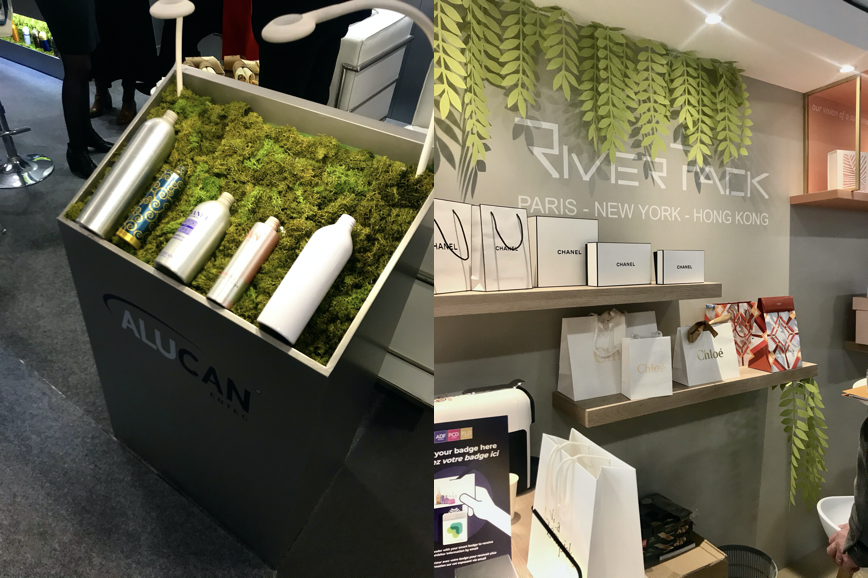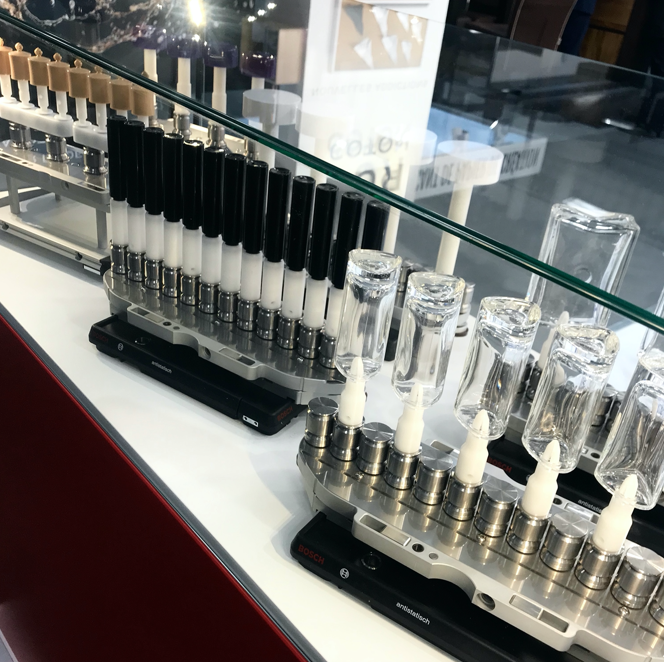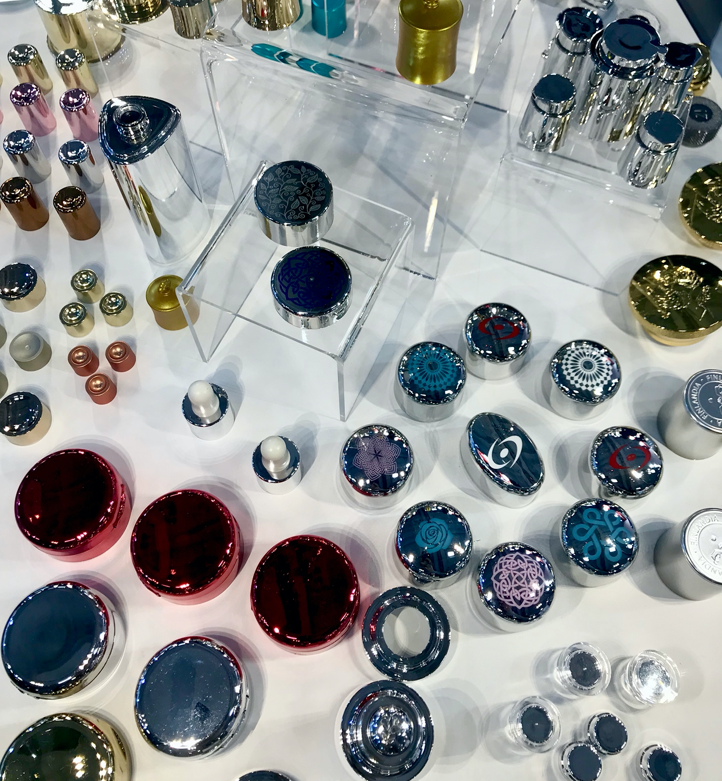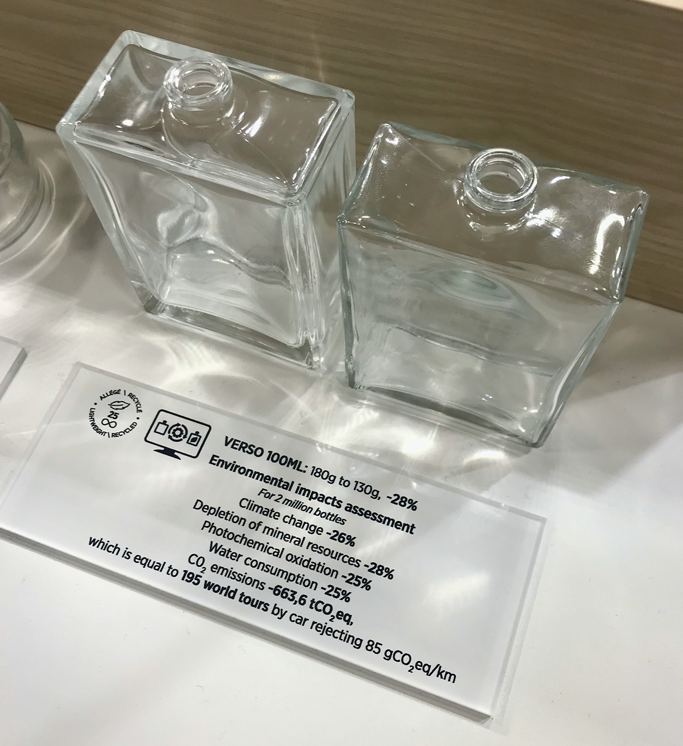The Next Generation Package Design: A Plastic-Free Future?
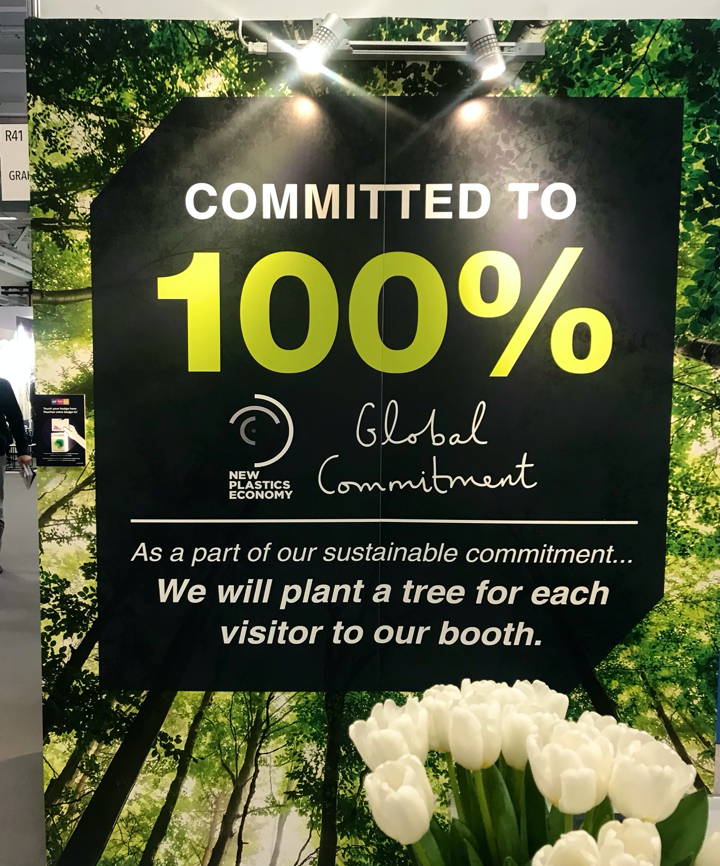
ADF&PCD is one of the largest trade shows in Paris dedicated to packaging designs for the household, pharmaceutical, automotive, cosmetic, food, and beverage industries. Last week, they held their show at the Paris Expo at Porte de Versailles and something peculiar happened over the span of the two-day event. As I walked the floor of the 700 something manufacturers on display, I observed many things that are expected at a trade show—people networking, demonstrations of the latest innovations, award presentations and expert talks. Everything was next to ordinary except for one thing: environmental branding.
Brands signaling their commitment to sustainability with faux plants, Image Credit: Aira XeneliAt the expo, neatly placed metal containers were displayed in a basket of fake green moss, their logos were encapsulated by shrubs of ivy, while plastic bottles in the front showcased clean flowing water. This year, manufacturers wanted to make it known that they were committed to being environmentally friendly.
As I visited the various booths, employees proudly showcased how their products met sustainability quotas they put forth that year. They also stressed the importance of tapping my badge at the tracking points. Each badge has a unique barcode that allows the management to gather data on visitor behavior at the show. In exchange for giving up your data, manufacturers will plant one tree being somewhere in the world. All of this was done in the pursuit of sustainability.
Sustainability is not a new concept; it has been around at least since the United Nation’s Brundtland Report in 1987 or earlier. However, its emphasis in recent years has allowed sustainability to catapult into a new macro-trend. Regardless of the reasons for this environmental awakening, the reality of the matter is that pollution is still increasing. Take for example how plastic production went from 2.3 million tons in 1950 to 448 million tons in 2015. Experts forecast this number to reach 896 million tons by 2050 based on consumer demands.
Dior showcasing its sustainable soap dispenser, Image Credit: Aira XeneliThere is not a single industry today that is not impacted by plastic. 75% of all plastic made will end up as waste, eventually finding a way to cause trouble throughout the supply chain. Yet despite these facts, there is not a single mention of reducing plastic use in any the 17 UN Sustainable Development Goals.
Why? At the forefront of this issue are the packaging manufacturers, hired by some of the largest corporations around the world to provide solutions in presenting their products for human consumption.
Plastic, metal, glass, and paper account as the four main materials in packaging. Some products, such as a perfume bottle, may end up using all four. Other products, such as a soda bottle, may end up using only one. In any case, plastic solutions often offer the best value for businesses in terms of economic, functional, sterile and safety standards. For example, plastic has revolutionized the healthcare industry so much so that it is hard to imagine consumers switching from single-use, plastic injection shots to reusable, glass injection shots, or plastic-sealed medicine pills to paper-wrapped medicine pills.
Company’s Portfolio of their products using the four main types of material, Image Credit: Aira XeneliHerein lies the problem: if plastic can provide more efficiency, safety, convenience, consistency, functionality, and durability when compared to other materials on the market, then what motivates industry leaders to choose another packaging material with less value for their bottom lines over plastic? Although journalists in the past, like Lucy Sielge at The Guardian, argued for green-alternatives to the current petroleum-based plastics, packaging manufacturers remain skeptical, and sometimes cynical, of the alternatives.
An account manager for Graham Packaging Company, one of the largest custom plastic container manufacturers in the world, spoke to me about his reservations on the industry pivoting away from plastic because of sustainability. “Plastic,” he says, “often gets a bad image because of how visible it is in the environment. This is due to how convenient plastic is. [Plastic] takes less energy to produces. Metal, on the other hand, uses more heat to melt, like thousands of degrees more, and more water to cool—and all of this requires natural resources. So switching from plastic to other materials may feel good in the short-term, but in the long-term may cause more indirect damage. The energy needed for metal and glass production needs to come from somewhere and the public may not realize where it is coming from – often from deforestation, gas fracking, mining or oil drilling.”
Demonstration on packaging production capabilities, Image Credit: Aira XeneliWhen questioned about the recyclability of plastic and how little there is of it, he responded that “sustainability with packaging should start with the manufacturers and how they can make operations as efficient as possible. This requires using the latest cutting-edge design to lower the environmental impact of plastic. However, we don’t have the final say in how these bottles get reused or recycled once it enters corporate or consumers hands. All we can do is invest in our technologies and employees to provide better solutions for our clients.” Other manufacturers like Giflor Technologies, Actipack, or Aptar shared similar sentiments when asked.
Company’s portfolio of metal and plastic top caps, Image Credit: Aira XeneliAn employee for Verescence, one of the biggest glass bottle manufacturers for the beauty industry, also agreed with the plastic manufacturers to a degree. He remarked that even though all industries can make more meaningful swaps for plastic packaging with eco-friendlier materials like glass or metal, there may be some designs or features on specific products that can be only produced using plastic. He stressed this idea with another point that glass bottles like the ones Verescence produce are still the best closed-loop containers for sustainability. Glass can be reused and recycled an infinite amount of times. In the end, glass, plastic and metal manufacturers alike argued that their responsibility to sustainability goes only so far as their operational process and what they can control.
Placard of company’s environmental impact assessment during product production, Image Credit: Aira XeneliSo then, what is the next-generation package design? Does responsibility lie with the consumer and what they do with the package once the product is finished? Are corporations to blame for prioritizing sales over innovative packaging designs? Or does the problem lie with the manufacturers and their management in new material technologies? I do not have an answer to these questions. Only time will tell if the investments in manufacturing operations will create new methods in packaging.

